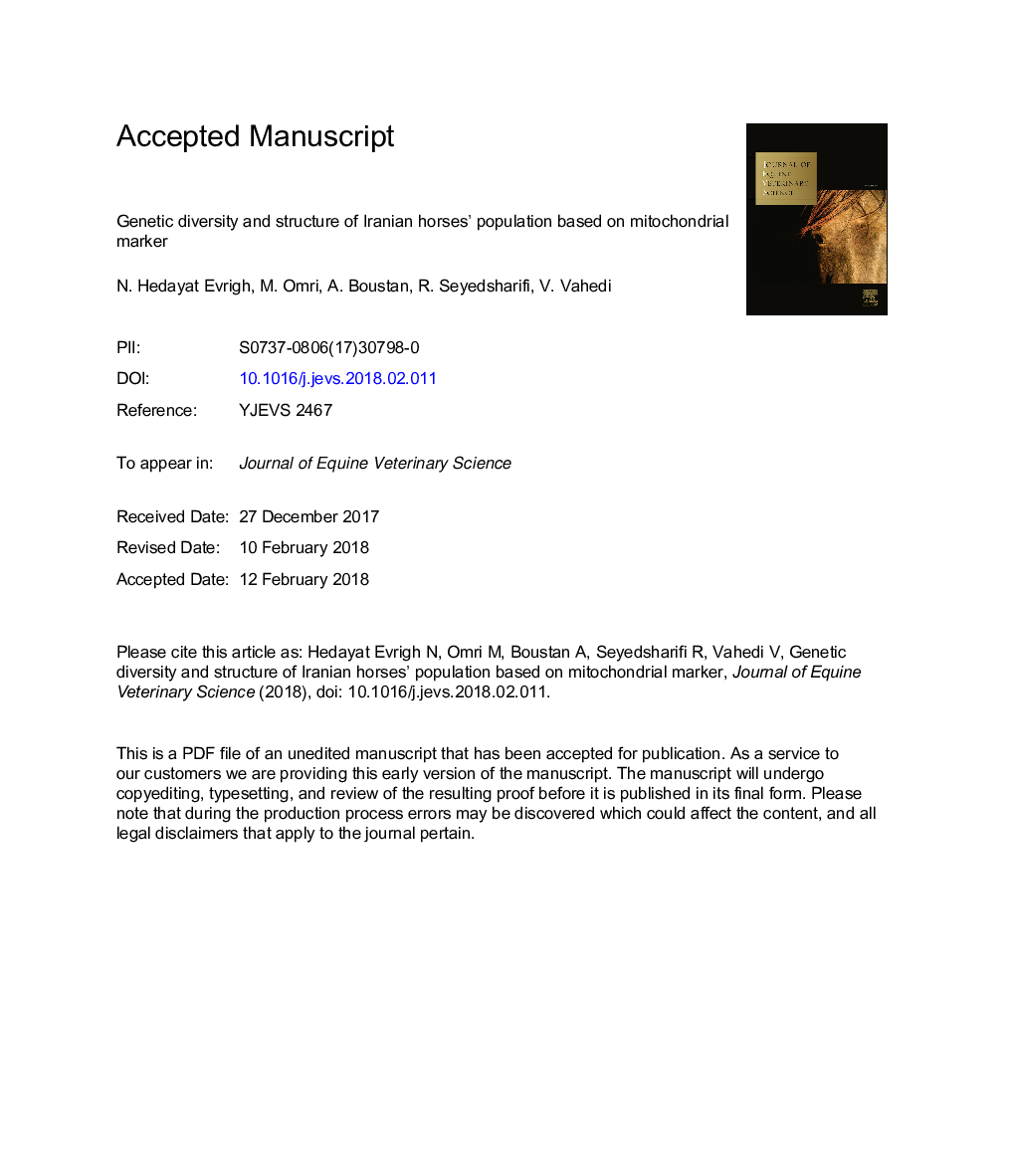| کد مقاله | کد نشریه | سال انتشار | مقاله انگلیسی | نسخه تمام متن |
|---|---|---|---|---|
| 8483137 | 1551536 | 2018 | 19 صفحه PDF | دانلود رایگان |
عنوان انگلیسی مقاله ISI
Genetic Diversity and Structure of Iranian Horses' Population Based on Mitochondrial Markers
ترجمه فارسی عنوان
تنوع ژنتیکی و ساختار جمعیت اسب ایران بر اساس نشانگرهای میتوکندریایی
دانلود مقاله + سفارش ترجمه
دانلود مقاله ISI انگلیسی
رایگان برای ایرانیان
کلمات کلیدی
موضوعات مرتبط
علوم زیستی و بیوفناوری
علوم کشاورزی و بیولوژیک
علوم دامی و جانورشناسی
چکیده انگلیسی
The source and history of horse domestication have been studied for decades in biology and archeology. The aim of this study was to evaluate the genetic structure and the genetic relationship between six breeds of native horses using mitochondrial D-loop region. Blood samples were collected from 96 horses. Total DNA was extracted, and 430 bp of D-Loop region (hyper variable) was amplified and sequenced using Sanger sequencing methods. The analysis of data led to identify 48 polymorphic sites that create 52 haplotypes. The plotted phylogenic tree for haplotypes of Iranian native horses is placed in the 11 haplogroups including A, B, C, E, G, I, L, M, N, P, and Q. Genetic and haplotype diversity values obtained were 0.0233 and 0.980, respectively. Nucleotide diversity (Pi) was observed between 0.0172 and 0.0242 in populations. In addition, the average number of nucleotide differences (k) ranged from 6.0 (Darehshori or Qashqai horse [DAH]) to 8.5 (Kord horse [KOH]) with an average value of 7.8. The highest and lowest genetic differentiates were observed between KOH and DAH (Fst = 0.193) and between North West native horse and horse riding club in North West (Fst = 0.003), respectively. Tajima D of 0.441 was obtained for all samples which was not significant (P > .01). The results indicate high genetic variety and numerous maternal lines in native horses of Iran.
ناشر
Database: Elsevier - ScienceDirect (ساینس دایرکت)
Journal: Journal of Equine Veterinary Science - Volume 64, May 2018, Pages 107-111
Journal: Journal of Equine Veterinary Science - Volume 64, May 2018, Pages 107-111
نویسندگان
Nemat Hedayat Evrigh, Mostafa Omri, Azadeh Boustan, Reza Seyedsharifi, Vahid Vahedi,
